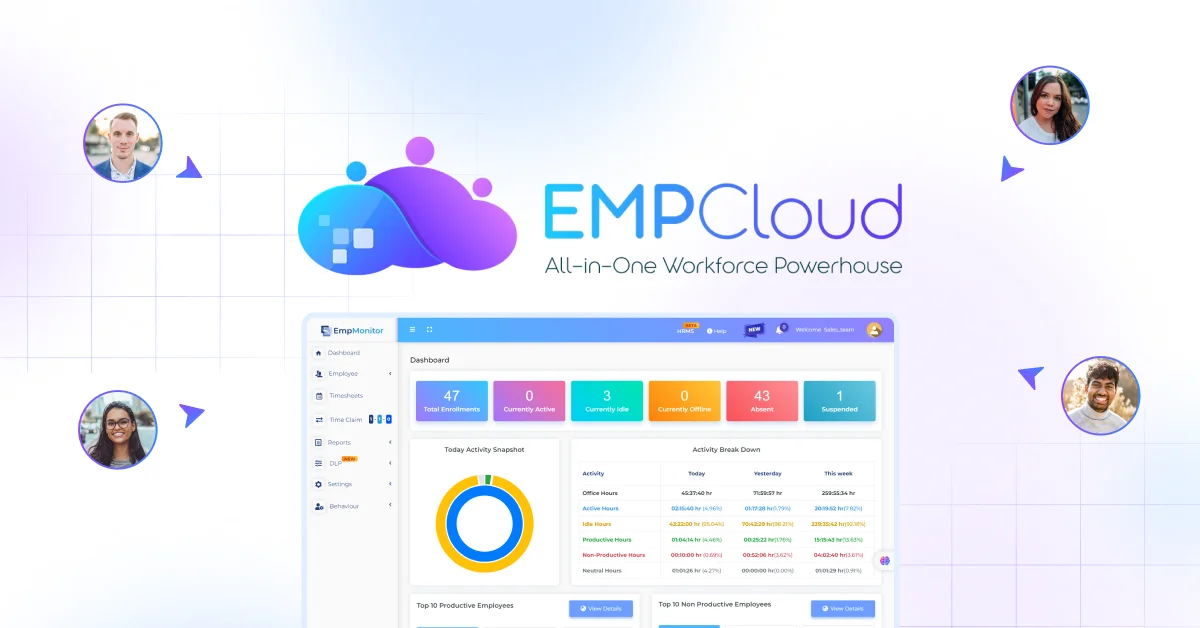
In today’s demanding work culture, employees often feel the need for extended breaks to recharge and focus on personal growth. Sabbatical leave offers professionals an opportunity to step away from work temporarily while preserving their career. Unlike regular vacations, sabbaticals provide months of freedom to pursue passions, education, or personal projects.
By understanding how sabbatical leave works and planning effectively, employees can make the most of this valuable time without worrying about work interruptions.
Listen To The Podcast Now!
What Is Sabbatical Leave?
Sabbatical leave is an extended period of time away from work, granted by an organization to its employees. Unlike regular vacation days, it allows employees to focus on personal growth, professional development, or health and well-being while maintaining their employment status. Understanding what sabbatical leave is helps employees plan effectively and make the most of this valuable time.
How Did Sabbatical Leave Originate And Evolve?
The concept of sabbatical leave is rooted in history. Ancient agricultural practices included a “Sabbatical Year,” where farmers would rest the land every seven years. Academic institutions later adapted this concept, allowing professors to take extended breaks for research, personal projects, or professional development.
Today, organizations worldwide recognize the benefits of sabbatical leave and implement structured programs to prevent burnout, retain top talent, and encourage innovation.
Extended breaks like sabbatical time off allow employees to gain new perspectives, explore creative solutions, and return to work with renewed energy. By providing time away from daily tasks, companies help staff develop skills, reflect on goals, and approach challenges with fresh ideas, making sabbatical leave a valuable tool for long-term professional growth.
Why Is Sabbatical Leave Important For Employees And Employers?
The modern workplace can be highly stressful. Continuous work without sufficient breaks leads to burnout, stress, and reduced productivity. Sabbatical leave, when managed effectively through a structured leave management system, offers multiple benefits for both employees and organizations:
Mental Recharge:
Employees gain a much-needed pause for mental well-being. This break allows them to step back from daily pressures, reflect on their goals, and return with a clearer mindset.
Personal Growth:
Time off allows employees to explore hobbies, travel, volunteer, or learn new skills, fostering creativity and personal fulfillment. It helps individuals reconnect with their passions, which can positively influence professional performance.
Career Development:
Professionals can pursue certifications, research, higher education, or special projects that enhance their expertise. This not only improves their career prospects but also equips the organization with employees who bring new knowledge and perspectives.
Employee Retention:
Organizations offering sabbaticals retain skilled employees for longer. Employees feel valued and supported, which strengthens loyalty, reduces turnover, and enhances overall morale.
By implementing sabbatical leave, companies not only support employee well-being but also cultivate a motivated, innovative, and productive workforce that benefits everyone in the long run.
Also Read:
How To Implement A Leave Management System?
Who Is Eligible For Sabbatical Leave?
Eligibility for sabbatical leave depends on company policies. Some organizations offer it to all employees after a minimum tenure, while others limit it to senior staff or high-performing employees. Typical criteria include:
- Completion of 3-5 years at the company
- Approval from managers based on performance and project completion
- Submission of a clear sabbatical plan
Employees should review their company’s policies before applying for sabbatical leave to ensure eligibility and compliance.
What Are The Rules Of Sabbatical Leave?
Understanding sabbatical leave rules is essential for a smooth and productive experience. While specifics vary by organization, common guidelines typically include:
- Duration Limits of the Sabbatical: Companies often define minimum and maximum lengths for sabbaticals. Knowing these limits helps employees plan their time effectively and ensures continuity of operations.
- Paid or Unpaid Leave Conditions: Some organizations offer fully paid sabbaticals, while others may provide partial pay or unpaid leave. Clarifying this in advance helps employees manage finances and expectations.
- Restrictions on Outside Employment: During a sabbatical, employees may be restricted from working elsewhere to prevent conflicts of interest and ensure the focus of the break remains on personal or professional development.
- Requirement to Submit a Formal Leave Proposal: Most companies require a detailed plan outlining the purpose of the sabbatical, duration, and how responsibilities will be handled. This ensures transparency and smooth workflow in the employee’s absence.
Adhering to these rules not only facilitates a seamless sabbatical experience but also strengthens trust between employees and the organization, making it easier to return to work refreshed and engaged.
How Long Can A Sabbatical Leave Be Taken?
One common question is how long is sabbatical leave. The duration varies from company to company but usually ranges between three months to one year. Some organizations allow shorter breaks of one to two months, particularly in sectors where continuous workflow is critical.
Planning the right duration ensures employees can fully enjoy their sabbatical leave while managing their career responsibilities effectively.
Do You Get Paid While On Sabbatical?
Many employees wonder do you get paid while on sabbatical. This depends on company policies. Some organizations offer fully paid sabbaticals, others provide partial pay, and some leave it unpaid.
Even unpaid sabbatical leave is valuable as it allows employees to focus on personal growth, skill development, or meaningful projects without work distractions.
What Are The Types Of Sabbatical Leave?
Different types of sabbatical leave exist to cater to various personal and professional needs:
Personal Sabbatical:
Focused on hobbies, travel, or family care. Employees can use this time to reconnect with loved ones, pursue passions they couldn’t during regular work, or explore experiences that promote personal fulfillment.
Professional Sabbatical:
Dedicated to learning new skills, certifications, or research. This type of leave allows employees to enhance their expertise, attend courses, or engage in professional projects that contribute to long-term career growth.
Volunteer Sabbatical:
Time off to contribute to social causes or community projects. Employees can participate in volunteering programs, humanitarian work, or environmental initiatives, gaining meaningful experiences that also build leadership and teamwork skills.
Medical Sabbatical:
For health recovery or mental wellness. Employees can take extended leave to recover from physical illnesses, undergo medical treatments, or focus on mental health, ensuring a full and healthy return to work.
Choosing the right type of sabbatical ensures employees achieve their personal and professional objectives, return refreshed, and bring renewed energy and perspectives to the workplace.
What Are The Benefits Of Sabbatical Leave?
Sabbatical leave provides benefits for both employees and employers.
For Employees:
- Reduce stress and prevent burnout
- Develop skills and gain certifications
- Explore life experiences such as travel or volunteering
- Return with renewed motivation and creativity
For Employers:
- Retain top talent
- Increase productivity as rested employees perform better
- Encourage innovation and fresh ideas
- Attract top talent by promoting work-life balance
Offering extended leave options fosters a positive organizational culture that values well-being and growth.
How Can You Apply For Sabbatical Leave?
Applying for sabbatical leave requires careful preparation and effective communication to ensure a smooth experience for both the employee and the organization. Key steps include:
Review Company Policies for Eligibility and Duration:
Understand the minimum tenure required, maximum allowed leave period, and any specific conditions your organization has in place. This helps avoid delays or misunderstandings in the application process.
Prepare a Detailed Leave Proposal:
Clearly outline the purpose of your sabbatical, objectives you plan to achieve, and a comprehensive plan for handing over responsibilities. Including how your tasks will be managed in your absence demonstrates professionalism and foresight.
Obtain Manager Approval and Address Concerns:
Schedule a discussion with your supervisor to explain your plan and answer questions about how work will continue smoothly. Proactively addressing concerns increases the chances of approval.
Plan Work Delegation to Colleagues:
Identify key projects and responsibilities that need coverage during your absence. Assign tasks appropriately, provide guidance, and ensure colleagues have access to necessary resources.
Set Measurable Goals for the Sabbatical Period:
Define what you want to achieve during your leave, whether it’s skill development, personal growth, or professional projects. Clear goals help you make the sabbatical productive and fulfilling.
Managing responsibilities before taking a sabbatical can be challenging, especially in large teams or high-demand roles. This is where Empcloud can make a significant difference.
By providing a unified platform for task management, attendance tracking, and productivity monitoring, Empcloud ensures employees can delegate work efficiently, monitor ongoing projects, and maintain seamless communication.
Such tools are essential for organizations fostering a flexible work environment, allowing employees to step away confidently while ensuring operations continue smoothly and teams remain supported.
How Can Employees Ensure A Successful Sabbatical Leave?
To make sabbatical leave successful:
- Plan ahead to manage personal and professional obligations
- Set clear, achievable goals for the sabbatical period
- Limit work communication but stay informed if necessary
- Prioritize mental, physical, and emotional well-being
- Document experiences and learning for reflection
Proper preparation ensures the sabbatical is rejuvenating and productive.
Also Read:
How To Build A Flexible Work Environment?
How Can The Sabbatical Period Be Maximized For Long-Term Benefits?
The sabbatical period is a valuable opportunity to pause, reflect, and plan for sustained personal and professional growth. Employees can maximize this time in several ways:
Evaluate Career Trajectory and Set New Goals:
Reflect on your current career path, identify areas for improvement, and set clear, achievable goals. This introspection helps align your future efforts with long-term aspirations and provides a sense of direction upon returning to work.
Acquire Skills Aligned with Future Objectives:
Use the break to pursue courses, certifications, or learning experiences that enhance your expertise. This not only strengthens your professional profile but also adds value to your organization in the long run.
Strengthen Relationships with Family and Friends:
Reconnecting with loved ones during the sabbatical fosters emotional well-being and creates a balanced life. These strengthened relationships contribute to overall happiness and reduce work-related stress.
Engage in Creative or Innovative Projects:
Explore personal or professional projects that ignite creativity, innovation, or entrepreneurship. Whether it’s a hobby, research project, or side venture, such activities can spark new ideas and improve problem-solving skills.
Properly planning and utilizing the sabbatical period ensures that the break provides lasting benefits, leaving employees refreshed, motivated, and equipped with new skills, perspectives, and energy to contribute more effectively to their roles.
How Can Empcloud Support Your Sabbatical Leave Planning?
Taking a sabbatical leave is most effective when you can step away from work without worrying about pending tasks. Empcloud is a comprehensive workforce management software that helps employees and managers stay aligned, even during extended time off.
By providing a unified platform for task management, attendance tracking, and productivity monitoring, Empcloud ensures that work continues smoothly while you focus on personal growth or professional development. Its tools allow for efficient delegation, real-time tracking, and seamless communication, giving employees peace of mind during their sabbatical.
Empcloud Features For Sabbatical Planning:
- Time & Attendance Tracking: Automates leave and attendance records, reducing confusion.
- Task & Project Management: Assign and track tasks in real time, ensuring team productivity.
- Geo-Location & Productivity Tracking: Monitor field teams without constant intervention.
- Employee Requests & Payroll Management: Manage comp-offs, WFH requests, and payroll efficiently.
- Centralized Insights & Reports: Access detailed performance and productivity reports.
- Policy & Document Management: Store and manage HR policies, onboarding documents, and compliance records in one platform.
By using Empcloud, employees can enjoy their sabbatical period with confidence, knowing workflow continuity and team efficiency are maintained.
How Should Employees Return To Work After Sabbatical Leave?
Reintegrating after a sabbatical leave can be smooth with proper planning:
- Catch Up Gradually on Updates: Review ongoing projects and company changes to get up to speed without feeling overwhelmed.
- Attend Debriefing Sessions: Meet with managers and colleagues to understand priorities and how your responsibilities were handled during your absence.
- Apply New Skills or Perspectives: Use the knowledge or insights gained during your sabbatical to improve performance and contribute fresh ideas.
- Maintain Work-Life Balance: Continue prioritizing well-being to preserve the benefits of your time off.
A structured approach ensures employees return refreshed, motivated, and ready to make meaningful contributions.
Conclusion
In conclusion, sabbatical leave is an invaluable opportunity for personal growth, career development, and mental rejuvenation. With proper planning, understanding of rules, and support from tools like Empcloud, employees can make the most of their time off without disrupting work
Whether for learning, travel, volunteering, or personal projects, taking extended leave ensures long-term benefits for both employees and organizations.
FAQs
1. Can Sabbatical Leave Be Taken Multiple Times?
Some organizations allow employees to take multiple sabbaticals over their career, often based on tenure or performance. Policies vary, so it’s important to check your company’s guidelines to understand eligibility for repeat sabbaticals.
2. How Does Sabbatical Leave Affect Employee Benefits?
While on sabbatical leave, some benefits like health insurance, retirement contributions, or paid leave accrual may continue or pause depending on company policy. Employees should clarify the impact on their benefits before starting a sabbatical.
3. Can Freelancers or Self-Employed Professionals Take Sabbaticals?
Yes, freelancers and self-employed individuals can plan sabbaticals, but they must arrange client commitments, deadlines, and finances independently. Tools like Empcloud can help manage ongoing projects and track productivity even during extended breaks.







